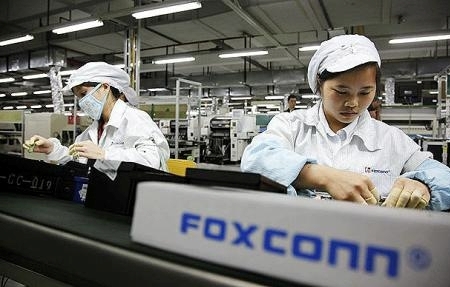


By Eric Fish
May 21, 2013
The U.S. state of Montana is in the midst of another suicide scandal. Over the past month, three Montanans have killed themselves, highlighting labor problems that continue to plague the Treasure State.
Montana previously made headlines in 2010 when it had 18 suicide attempts and 14 deaths, calling attention to the state’s poor working conditions and leaving those who buy its cheap products wondering if you can really put a price on human life.
Ok, none of that is true. And if it were, that narrative would probably be laughed at. After all, the state is home to roughly a million people, so a suicide rate of three in one month (or 14 in one year) would hardly constitute a scandal among such a large and diverse population.
But replace “Montana” in the above narrative with another place that has a population of roughly 1 million: Foxconn, the Taiwanese electronics manufacturer and Apple supplier. Now the story probably seems a bit more familiar; and perhaps even reasonable.
So I’m sorry if I misled anyone about the state of Montana. It did not have 14 suicides in 2010. It actually had 227. In other words, if you were an American living in Montana in 2010, you were 16 times more likely to kill yourself than if you were a Foxconn employee in China.
Montana had a similar rate of 225 the following year. If these trends are still in place, you can estimate that about 18 people committed suicide in Montana during the past month.
However, it’s Foxconn that’s back in the news cycle. New York Times, Wall Street Journal, AFP and a raft of lesser known publications have reported on three people that killed themselves over the past month at Foxconn.
To be fair, all three of the recent deaths were at a single Foxconn factory in Zhengzhou. But that factory alone has roughly 120,000 workers and 2011 data shows that China has an average annual suicide rate of 22 per 100,000 people. So after crunching the numbers, we’ll need to see about 23 more suicides at that factory this year for it to even reach the Chinese average. There’d have to be about 11 more for it to reach the American average.
In their stories on the recent “suicide scandal” some outlets have cited China Labor Watch, which said, "Some estimate [the recent Foxconn suicides] to be related to the new 'silence mode' policy at Zhengzhou in which workers are purportedly threatened with termination if they talk on the job."
When the original suicide story hit Foxconn in 2010, a similar narrative emerged that there was a cause and effect between bad working conditions and the “spate of suicides.”
However, Michael Phillips, a Canadian psychologist and executive director of the WHO's Suicide Prevention Center in Beijing, says, “[There’s an] idea that there are unique stressors that cause suicide, but suicide is always the result of a variety of factors – social, genetic and psychological. The press loves simple answers for complicated problems.”
Indeed, Foxconn’s “suicide problem” is a classic example of an “Availability Cascade.” This cascade begins when an idea emerges that appears to explain a very complex situation in a simple, plausible way. In this case, “suicides are happening at Foxconn because of harsh working conditions.”
The idea is first accepted and pushed by “availability entrepreneurs” who stand to benefit from the attention it will receive (ie – labor groups and rights organizations). Because of its simplicity and apparent plausibility, the idea quickly becomes accepted by a lot of people, including those in the media who jump on the story for fear of losing audience to competitors (especially when the story involves a closely watched international brand like Apple). Likewise, political and social leaders must jump on the bandwagon or risk being seen as dismissive of the problem.
At this point, anyone who stumbles onto the issue faces a large cast of reputable characters lending legitimacy to the idea. Because of the implicit social pressure that now exists to accept it, critical thinking is easily overpowered and the cascade continues.
This is the case with Foxconn’s suicide problem. Now, any new Foxconn suicide reinforces the sweatshop narrative; and this is doubly true when routine and predictable statistical clusters happen. But those who actually look at the numbers shouldn’t be asking why Foxconn has so many suicides, but rather, why Foxconn has so few suicides compared to the average for China, and for that matter, most developed Western countries.


